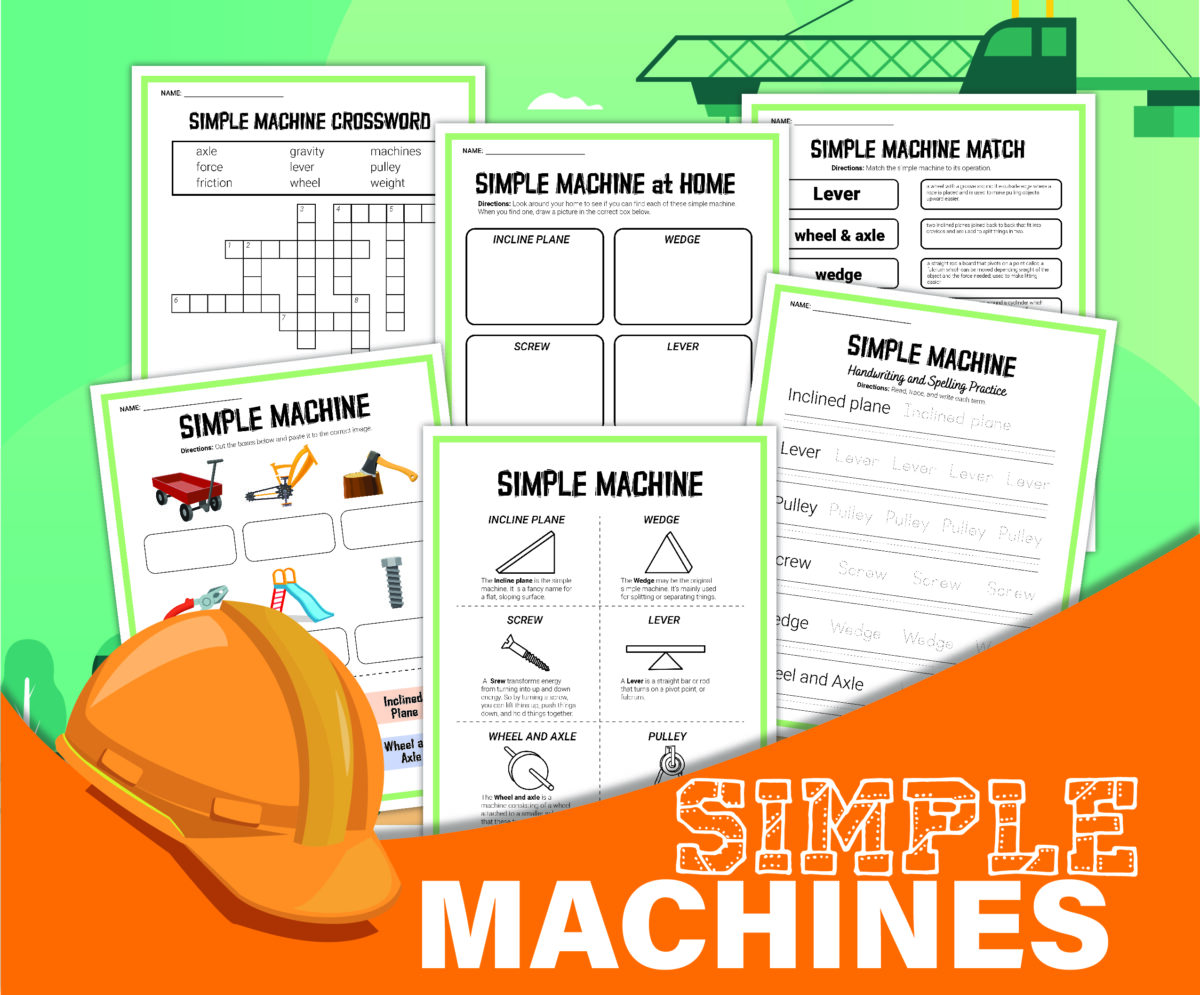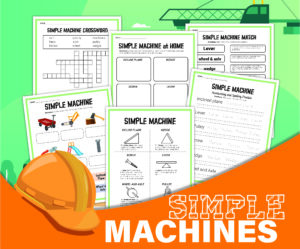Explore Simple Machines for Kids: Hands-On STEM Learning
These simple machine projects are an engaging and hands-on way for kids to learn the science behind simple machines! Discover how simple machines make work easier, explore everyday examples, and try your hand at designing and building your own simple machine. These activities are perfect for elementary and middle school students, sparking curiosity and fostering problem-solving skills.
Why Build Simple Machines with Kids?
Building simple machines is a fantastic way to help kids understand the mechanics behind how things work. These easy STEM activities provide high-impact learning opportunities while keeping the materials simple and accessible—many projects can be done using recycled items or inexpensive supplies!
By working on these activities, kids gain:
- A deeper understanding of forces and mechanical advantage.
- Valuable problem-solving and critical-thinking skills.
- Opportunities to brainstorm, troubleshoot, and create innovative solutions.
What Are Simple Machines?
Simple machines are basic mechanical devices that make tasks easier by altering the force required to perform work. They provide a mechanical advantage, allowing us to lift, push, or move objects with less effort.
There are six main types of simple machines:
- Lever
- Wheel and Axle
- Pulley
- Inclined Plane
- Wedge
- Screw
These simple machines are often combined to form complex machines used in everything from construction to everyday tools. Understanding them is key to grasping engineering, physics, and problem-solving concepts.
How Do Simple Machines Make Work Easier?
Simple machines reduce the force needed to perform tasks by:
- Changing the direction of the applied force (e.g., pulleys).
- Multiplying the input force (e.g., levers, gears).
- Spreading the force over a longer distance (e.g., inclined planes).
For example:
- Like a seesaw or crowbar, a lever lets you lift heavy objects with less force.
- A pulley system redirects force, allowing you to easily lift objects vertically.
- An inclined plane reduces the effort needed to move objects by increasing the distance over which the force is applied.
Examples of Simple Machines in Everyday Life
Simple machines surround us and are vital to our daily lives. Here are real-life examples to spark recognition and curiosity:
1. Lever
- Seesaws and scissors are classic examples of levers.
- Bottle openers make it easy to pop off caps.
- Hammer claws are used to pull out nails effortlessly.
- Light switches operate as levers to turn lights on and off.
2. Wheel and Axle
- Bicycle pedals use a wheel and axle system to transfer force from your feet to the wheels.
- Rolling suitcases make heavy loads portable.
- Doorknobs allow us to open doors with minimal effort.
- Rolling pins help evenly flatten dough in baking.
3. Pulley
- Elevators use pulley systems to lift and lower cabins.
- Window blinds are made easier to open with small pulleys.
- Flagpoles let you raise and lower flags.
- Construction cranes lift heavy materials using advanced pulley systems.
4. Inclined Plane
- Wheelchair ramps make buildings accessible without requiring much lifting effort.
- Slides are fun examples of inclined planes that use gravity to move objects down.
- Moving ramps in loading docks or trucks assist in transporting heavy items.
- Driveways often incorporate a slant, making it easier to push objects up.
5. Wedge
- Knives and axes split or cut materials with less effort.
- Nails and screws penetrate surfaces to hold things together.
- Doorstops prevent doors from moving.
- Shovels use wedge edges to cut into the ground.
6. Screw
- Jar lids twist easily to open or close jars.
- Bolts secure objects tightly.
- Bottle caps ensure that the contents stay sealed.
- Corkscrews use a screw mechanism to remove corks from bottles.
7. Compound Machines (Combinations of Simple Machines)
- Bicycles use wheels, axles, pulleys, and levers.
- Wheelbarrows combine levers and wheels to carry heavy loads.
- Can openers combine levers, wedges, and wheels for efficient opening.
- Scissors use levers and wedges to cut materials easily.
Simple Machine Projects for Kids
Here’s a list of creative and exciting projects that combine fun with learning. Each project includes detailed instructions and free printables!
1. Archimedes Screw
Build a working water screw inspired by Archimedes. This classic project teaches kids about inclined planes and rotational motion.
2. Balloon-Powered Car
Use the force of air to power a car and explore how wheel and axle systems work. Experiment with different designs to maximize speed and distance.
3. Candy Gears
Create a gear train using candy and observe how gears transfer motion and change rotational speed.
4. Catapults
Build levers with various materials (craft sticks, pencils, LEGO) and test their ability to launch objects. A great introduction to the concept of mechanical advantage!
5. Pulley Systems
Build a functional pulley system to lift objects. Try variations like outdoor pulleys or a PVC pipe pulley system.
6. Rubber Band Cars
Explore potential and kinetic energy by building cars powered by rubber bands. Modify designs to improve performance.
7. Snow Shovel STEM Challenge
Build a snow shovel from simple materials, like cardboard and craft sticks, and use it to scoop up “fake snow.” This challenge demonstrates how a lever can lift and move materials. Add extra fun by creating a contest to see who can design the most effective snow shovel or lift the most “snow” in one scoop!
8. Ramp STEM Challenge
Design and test a ramp to explore the principles of an inclined plane. Suggestions:
- Toy Car Races: Build ramps of different angles and materials to observe how incline affects speed and distance.
Extend the Learning
- Real-World Applications: Discuss how construction equipment, vehicles, and household tools utilize simple machines.
- STEM Career Exploration: Highlight careers in engineering and design that rely on the principles of simple machines.
- Creative Challenges: Have kids design their own inventions, combining multiple simple machines to solve everyday problems.
- Interactive Worksheets: Download our simple machine worksheets with hands-on activities and reflection pages to reinforce learning.


